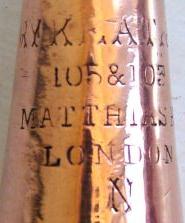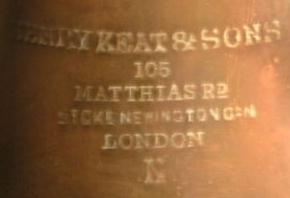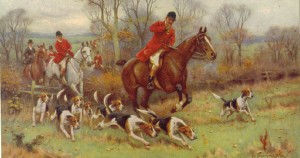Samuel Keat
Samuel Keat, the founder , was the son of a customs officer at Lymington in Hampshire , and as probably born about 1770.It is thought that he took up his apprenticeship with Richard Woodham who is said to have been a watchmaker near Red Lion Square in London, and who in 1780 established a workshop for brass and copper instruments. He became a workman with R.Woodham and succeeded to the business on Woodham's death in 1795. Samuel Keat had four sons , George born in 1800 , William born in 1815 , Henry was also born in 1815 , and James born 1818. All four boys were brought up in their fathers trade. George Keat , the eldest married R.Woodhams daughter and joined his father in partnership as Keat and Sons in 1825.
Keat & Sons

R.Woodham supplied brass instruments to D'Almaine and on Woodhams death Keat continued to do so and became trade makers to Key about 1820. This explains why the name Keat is a rarity on instruments of that time for as trade makers , the firms they supplied had their own names on the instruments. In 1840 the firm moved to 190 High Holborn, London, remaining there until 1866. In 1856 however , they again started making under their own name as well as continuing to supply other companies. In 1866 they moved tp 103-105 Matthias Road , Newington Green , London, although in 1869 they had an address at Keppell Row in Stokr Newington Green. This was in fact the same address as 103-105 Matthias Road.
George Keat

On the death of Samuel Keat , the Founder , his interest passed to his son George while William & Henry helped as foremen. James , the youngest , emigrated and settked in Winchester , N.H> , USA where he made instruments for Graves & Co, becomming a partner in the concern. He died having sold his share in the business around 1844. Henry was both a mechanical genius and a musician . In 1835 he made a cornet-a-pistons , and in 1836 he toured for two seasons in the USA with the Covent Garden Opera Orchestra. Although he did not invent the cornet , he greatly improved it by a seies of alterations to the valves. In 1856 he became chief director of Keat & Sons , and then in 1860 bought out his brother George.
Henry Keat
Henry Keat had three sons , Daniel born in 1843 , Samuel & George both born in 1846. Samuel was another Keat who settled in the USA but Daniel & George remained in the business suceeding to it on their father [ Henry's} death in 1876. Daniel had two sons , working with him in 1895 , these were Daniel Jr and Henry, the father and uncle of Mr D.H.Keat , and the firm had premises around Newington Green for nearly 100 years not moving until after the 1939-45 war. This move was to 59 Curnock St, Camden Town and from here the next move was to Clarence Mews on 3rd December 1963, less than a mile from Newington Green again.
D.H.Keat
The firm of Keat & Sons then moved from London altogether and opersted from Doniet House , Ilminster in Somerset where it continued making Hunting & Coaching horns in the same way as it had for 200 years. They have been trade makers all along and have made hunting horns for many of the leading saddlers such as Merry , Whippy , Wilkinson & Kidd , Cornish & Rogers , and supplied the trade in Wasall as well as the Army & Navy Stores , and Potters of London. Since Swaine & Adeney took over the business of Kohler and Son in 1907 , Keats have made all their Hunting Horns. This association only ended in 1984 with the take over of the business by Messrs, R.Clatworthy & Robin Walker.
Clatworthy & Walker
Messers Clatworthy & Walker took the decision to market their horns under the firms own name to provide abetter service to the Masters and Huntsmen as well as the driving fraternity , by taking the horns to them by knoeledgable and experienced users who have a genuine interest in both hunting & horns.
Calcutt & Sons

Ian Compton bought the business from Clatworthy and Walker in 1988 , and now runs the Henry Keat business from Sutton Scotney , in conjunction with Calcutt & Sons Ltd
